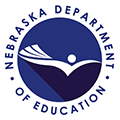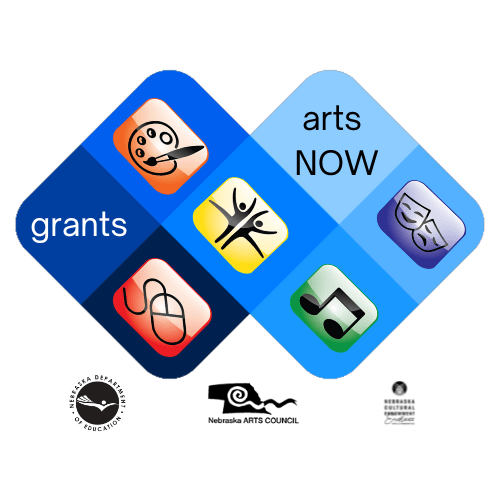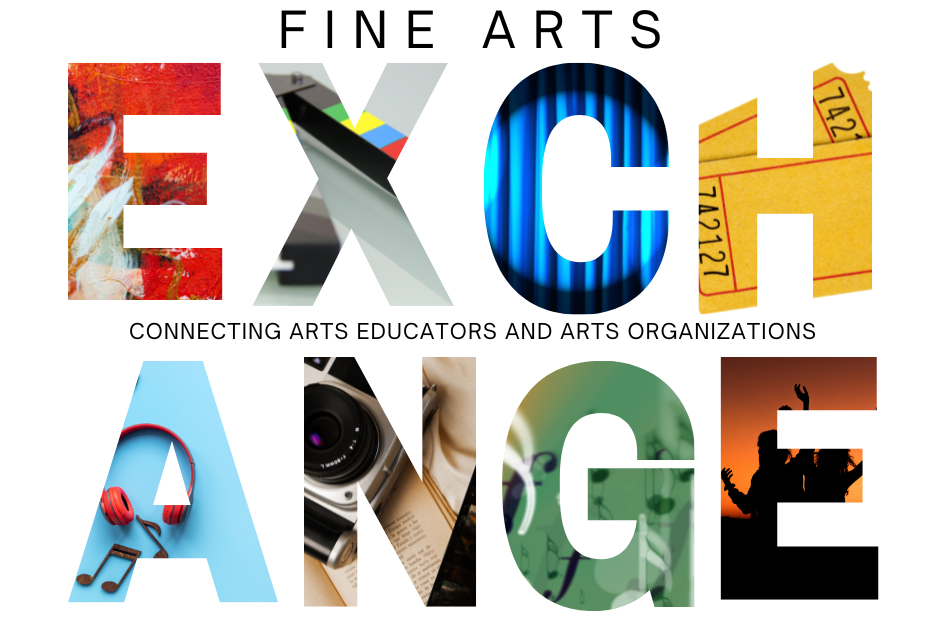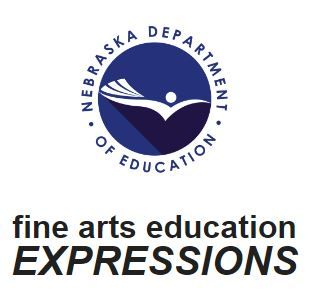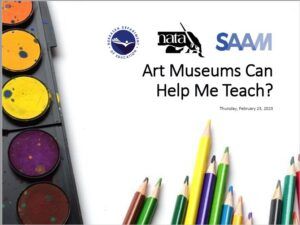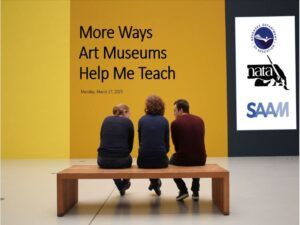
Welcome to Nebraska’s Fine Arts Education!
The current Nebraska Fine Arts Education Standards were adopted by the Nebraska State Board of Education in 2014. The standards challenge students to develop the essential fine arts skills needed to succeed in college, career, and life. They cover a broad array of core knowledge and proficiencies in the areas of media arts, visual arts, dance, music, and theatre.
The Nebraska Department of Education developed content area standards for Fine Arts Education to provide schools a framework for ensuring quality teaching and learning offered in Nebraska schools. The standards clearly describe what students need to know and be able to do, placing student learning at the center of schooling. By setting clear expectations for learning, content standards offer a framework for teachers when designing teaching and learning experiences and provide a means for student to set personal learning goals associated with academic success (Down, 2055).
The Nebraska Department of Education uses a collaborative writing process that utilizes the expertise of Nebraska educators and includes representation from all stages of Nebraska’s education system (i.e., early childhood education, K-12 education, and postsecondary education). The department ensures that that the educators reflect all sizes of schools and parts of the state. In addition, representatives from the regional Education Service Units (ESUs) are included as part of the writing teams. The development process includes opportunities for feedback from business and industry representatives as well as local community members, parents, school administrators, and educators not part of the writing process.
Fine Arts Standards
Nebraska’s College and Career Ready Standards for Fine Arts were adopted by the Nebraska State Board of Education on March 4, 2014, and include the areas of media arts, visual arts, dance, music, and theatre.
To ensure that the standards for each content area are well-organized and internally coherent, NDE articulates a common format for all content area standards across subjects.
Standards: At the highest level of generality, Nebraska’s content area standards include a set of broad, overarching content-based statements that describe the basic cognitive, affective, or psychomotor expectations of the students. They reflect long-term goals for learning. There is one comprehensive K-12 Fine Arts standards for each area of media arts, visual arts, dance, music, and theatre.
Indicators: Under each standard are indicators which further describe what a student must know and be able to do to meet the standard. Indicators are performance-based statements that provide educators with a clear understanding of the expected level of student learning and guidance. Indicators provide guidance for assessment of student learning.
Nebraska’s Fine Arts Standards are organized in grade bands of K-2, 3-5, 6-8 and 9-12. These statements are organized into categories and are not course specific. To assist in your understanding of the standards documents, a glossary for each content area is included in the next tab under “Standards Glossaries”
Vertical Views:
- K-2 Standards (pdf)
- 3-5 Standards (pdf)
- 6-8 Standards (pdf)
- 9-12 Standards (pdf)
Horizontal Views:
- Media Arts (pdf) Media Arts (doc)
- Visual Arts (pdf) Visual Arts (doc)
- Dance (pdf) Dance (doc)
- Music (pdf) Music (doc)
- Theatre (pdf) Theatre (doc)
Standards Glossaries
To assist in reading the standards, the glossaries contain definitions, explanations, and additional resources you may find helpful.
Content Area Standards vs. Curriculum
The Nebraska content area standards describe the knowledge and skills that students should learn, but they do not prescribe particular curriculum, lessons, teaching techniques, or activities. Standards describe what student are expected to know and be able to do, while the local curriculum describes how teachers will help students master the standards. Decisions about curriculum and instructional are made locally by individual school districts and classroom teachers. The Nebraska Department of Education does not mandate the curriculum used within a local school.
School Year 2023-2024 Fine Arts Course Codes
Each year, the Nebraska Department of Education updates the Course Codes and Clearing Endorsements guidelines, the tool by which Nebraska districts report the courses and subjects offered in their schools. This information is collected annually per approval regulations.
To date, the fine arts course codes have lacked the specificity necessary for schools to report courses offered in the areas of Media and Visual Arts, Dance, Music, and Theatre. This has resulted in a high number of “other” enrollments.
For school year 2023-2024, updates to the guidelines will allow for more accurate reporting. An additional factor to these significant changes is Nebraska’s upcoming participation in the Arts Education Data Project a national project that takes our publicly reported data (arts education access, enrollment, and participation), standardizes it, and then provides data visualization tools that will help inform future decision making. Information about this new partnership will be shared with school districts and arts educators as it develops.
The spreadsheet below shows the 2023-2024 fine arts education courses, both changes to specific courses that already exist and new courses that have been added. We are asking districts to evaluate the current courses offered and categorize them according to the new course codes. We urge districts to move enrollments from “other” course codes to one of the new course codes that are available. You will also note that the subject of “Art” has been renamed to “Visual Art” to help distinguish it from “Fine Arts,” “Language Arts,” and “Communication Arts.”
You will also find the courses taught in Nebraska schools and the appropriate endorsements for those subjects or courses. In instances where no specific endorsement is required, the “level” of endorsement must still be appropriate for the assignment.
Nebraska approval regulations (Rule 14) and accreditation regulations (Rule 10) require that certain percentages of F.T.E. (Full Time Equivalency) elementary and middle grade teachers hold appropriate endorsements and that certain percentages of instructional units at the secondary grades be assigned to teachers holding appropriate endorsements. For teachers to be considered appropriately endorsed for their assignments, they must teach the grade levels and subjects indicated on their certificate. The grade level designations are shown on the attached spreadsheet.
As you work through the following pages, please let us know if you have any questions. Please contact Cody Talarico at cody.talarico@nebraska.gov or Marissa Payzant at marissa.payzant@nebraska.gov. It’s important to know that this change is a work in progress. We welcome specific questions and feedback that will inform the course codes for future years.
Resources for Fine Arts Courses for SY 2023-2024
Letter for the Fine Arts Course Code Changes for School Year 2023-2024
Spreadsheet of SY 2023-2024 Fine Arts Course Codes Changes This spreadsheet maps the changes for the SY 2023-2023 fine arts course codes to the 2023-2024 fine arts course codes.
Presentation on Fine Arts Education Course Code Changes from Data Conference Webinar on April 12, 2023. Recording of the April 12 Data Webinar.
NDE Course Codes Site (now updated for 2023-2024). NDE Adviser Resources. NDE Bulletin for 2023-2024 Course Codes and Clearing Endorsements.
Fine Arts Education Update on Fine Arts Course Codes for SY 2023-2024
Nebraska’s Fine Arts Standards are for grades K-12. For early childhood, visit the Early Learning Guidelines for Nebraska’s Birth to Age Five Learning and Development Standards and refer to the Creative Arts section which includes information for the areas of music, visual art, dramatic play, and movement.
Arts NOW Grants Awarded to Nebraska Schools
Students across Nebraska will have access to projects in a wide range of arts through special grants awarded this year. The Arts NOW Grants are special one-time grant opportunities that were made possible by funding from the Nebraska Arts Council in partnership with the NDE and will provide $180,000 to 23 school districts impacting 79 schools throughout the state this spring. The projects will serve more than 20,000 students.
“We’re excited to offer support to our Nebraska schools, arts educators, and kids who learn and participate in arts education programs, ” said NDE Fine Arts Education Specialist Cody Talarico. The Arts NOW Grants differ from other arts grants by expanding what projects are available. “This program will allow items to enhance arts instruction that don’t necessarily qualify for our other grant programs,” said NAC program specialist Anne Alston. The Arts NOW Grant program reflects the creativity and innovation of arts educators, as well as the on-going need for arts education funding across the state.
The grant program is flexible and allows for projects in all the arts subjects including media arts, visual arts, dance, music and theatre. Some of the projects include printmaking in the visual arts classroom, world music drumming, learning lightning design and how to run light boards for theatre, the creation and installation of a school-wide public art mural, the study of world musical genres including instruments from various cultures, and the creation of visual art and collaboration into a theatrical performance creation among others.
Grants ranged from $1,341 to $20,000 with the average award of $7,816 and span all grade levels including elementary, middle, and high schools. Some projects are even across school divisions where high school students will work with middle school students to present to the elementary school.
Visit the Arts NOW Grant program page for more information on the program and to see the list of grant recipients.
Fine Arts Exchange
The Fine Arts Exchange is electronic event to connect arts educators with arts organizations, both state agencies and non-profits, with programs and opportunities to extend, enhance, and enrich arts learning. Visit the “Fine Arts Exchange” for a list of organizations that participate in the event.
The Fine Arts Exchange is designed to be a resource for arts educators. New organizations will be added as they become available. If you know an organization who’d like to participate, have them contact Cody.
Check out the latest news from Nebraska Fine Arts Education.
Fine Arts Education EXPRESSIONS Newsletter – Back to School 2022
Fine Arts Education EXPRESSIONS Newsletter – Fall 2022
Fine Arts Education EXPRESSIONS Newsletter – Winter 2023
Fine Arts Education EXPRESSIONS Newsletter – Spring 2023
Fine Arts Education Update on Fine Arts Course Codes for SY 2023-2024 April 2023
Fine Arts Education EXPRESSIONS Newsletter – Summer Send Off 2023
Fine Arts Education EXPRESSIONS Newsletter – Back to School 2023
Fine Arts Education Professional Learning Events
Art Museums Can Help Me Teach? and More Ways Art Museums Can Help Me Teach
NDE Fine Arts, Nebraska Art Teachers Association, and the Smithsonian American Art Museum presented “Art Museums Can Help Me Teach?” and “More Ways Art Museums Can Help Me Teach” in February and March 2023. This professional learning series is an introduction to ways you can collaborate with the Smithsonian American Art Museum and bring the Smithsonian Institution to your school and your kids.
Learn how interacting with artworks can sharpen your kids’ critical thinking skills, helping them learn key concepts in STEM, ELA, History, Social Sciences, Visual Arts, and other contents, too. Discover the vast resources of the Smithsonian American Art Museum and how you can use art from their collection, or lesson plans and video conferences that been developed. Explore the Smithsonian Institution’s Learning Lab that spans all 21 museums of the Smithsonian Institution.
Access the recordings and materials below.
February 2023: “Art Museums Can Help Me Teach?” Recording. The slide deck is also available. Be sure to toggle on the presenter’s notes.
March 2023: “More Ways Art Museums Can Help Me Teach” Recording. The slide deck is also available. Be sure to toggle on the presenter’s notes.
Special Programs and Events
Walk to Unlock Nebraska
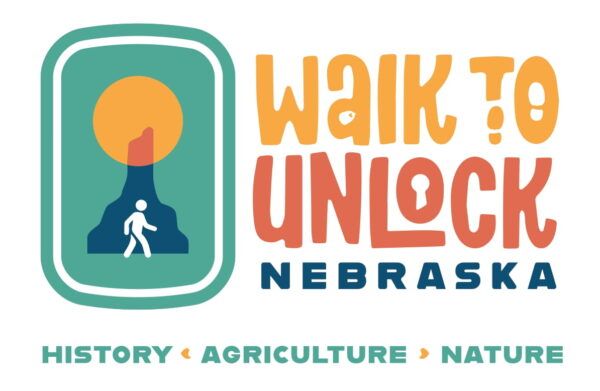
Creativity is a necessity when working with youth. Walk 2 Unlock Nebraska allows classrooms and out-of-school clubs the opportunity to engage youth to learn about agriculture, nature, historical, and science-based content along one of four Nebraska trails. Four trails are currently open.
Walk 2 Unlock supports the whole child, working to provide activities to support body and mind. The program features an interactive map of Nebraska that allows users to track their locally achieved physical activity miles to make progress on virtual trails across the state. As students travel across the virtual trails, they will encounter checkpoints to learn more about the state through STEAM lessons appropriate for grades K-8th. Check out for Walk to Unlock Nebraska for more information.
Walk to Unlock Nebraska is a program of the Nebraska Department of Education Healthy Schools Program in partnership with Nebraska Farm Bureau Foundation’s Agriculture in the Classroom, Nebraska Game and Parks, Nebraska Tourism, Midwest Dairy, History Nebraska, and Nebraska Public Media.
Contact
Cody Talarico, Fine Arts Education Specialist
Phone – 402.314.7822
Email – cody.talarico@nebraska.gov
Join Our Mailing List
You’ll receive newsletters, invitations to events, and special announcements.

